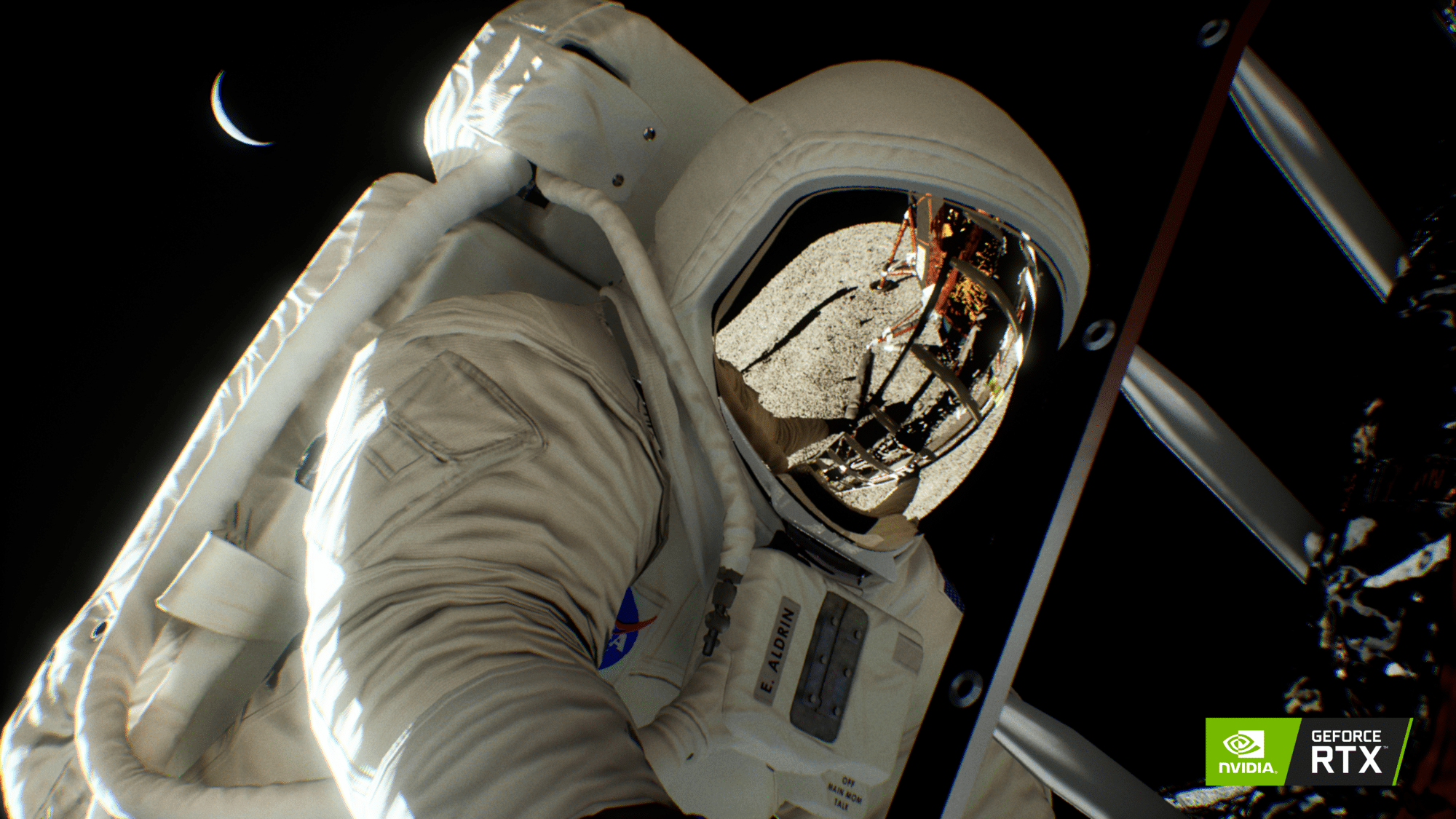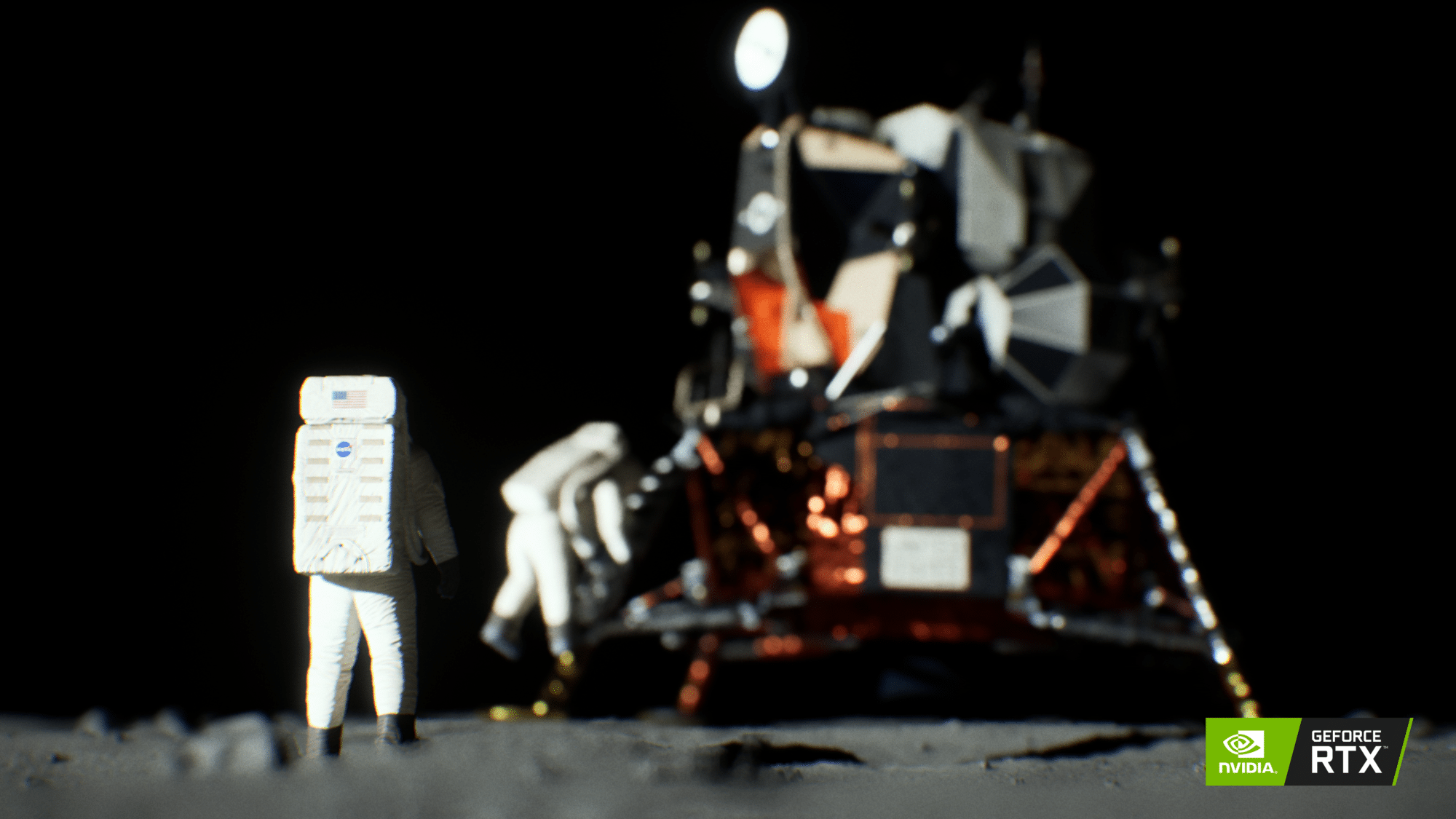By the Light of the Moon: Turing Recreates Scene of Iconic Lunar Landing
Four years ago, our demo team used GPUs to debunk the myth that the Apollo 11 moon landing was a hoax. So thoroughly, in fact, that it’s become a bit of a joke that the best way to have actually faked the moon landing would’ve been to use technology that didn’t exist at the time.
Now, nearly a half century after Neil Armstrong first set foot on the moon, we’ve refreshed our earlier demo with the real-time ray-tracing technology we built into our latest GPU architecture, Turing.
Speaking before an audience of thousands of entrepreneurs, researchers, technologists and media at GTC Europe in Munich Wednesday, NVIDIA CEO Jensen Huang demonstrated how our latest NVIDIA RTX GPUs — with their real-time ray-tracing capabilities — allowed our demo team to digitally rebuild one of the landing’s iconic photographs, of astronaut Buzz Aldrin clambering down the lunar module’s lander.
Read More: The Top 5 “Recipes” That Give AI Projects a Higher Likelihood of Success
Recreating the great event with a stunning level of realism, we re-confirmed our earlier conclusion: the photo looks the way it would if it were taken on the moon.

“This is the benefit of NVIDIA RTX,” Huang said. “Using this type of rendering technology, we can simulate light physics and things are going to look the way things should look.”
Our Turing architecture allowed our demo team to do this because it’s able to trace the path of a beam of light back from the screen — or frustum, as computer scientists call it — and bounce around a scene to render reflections, shadows, ambient occlusion, global illumination and other visual phenomena in an instant. Prior to RTX technology, only special effects rendering farms working for weeks or months on a single scene could manage this.
Read More: Fluor Uses IBM Watson to Deliver Predictive Analytics Capability for Megaprojects
The demo team built on work they did four years ago, when they collected every detail they could to understand the iconic image. They researched the rivets on the lunar lander, identified the properties of the dust coating the moon’s surface, and measured the reflectivity of the material used in the astronauts’ space suits.
Serious Moonlight
To update our original demo, NVIDIA engineers rebuilt the scene of the moon landing in Unreal Engine 4, a game engine developed by Epic Games. They simulated how the sun’s rays, coming from behind the lander, bounced off the moon’s surface and Armstrong’s suit, to cast light on Aldrin as he stepped off the lander.

All of this only heightened the fidelity of our latest demo — and re-confirmed what we’d discovered four years ago. That the illumination of the astronaut in the photo wasn’t caused by something other than the sun — such as studio lights — but by light doing what light does.
Read More: The AI Gold Rush: How to Make Money off AI and Machine Learning!








Copper scrap volume forecasting Scrap copper granulation Scrap metal compaction services
Copper cable scrap repurposing, Scrap yard services, Renewable copper resources